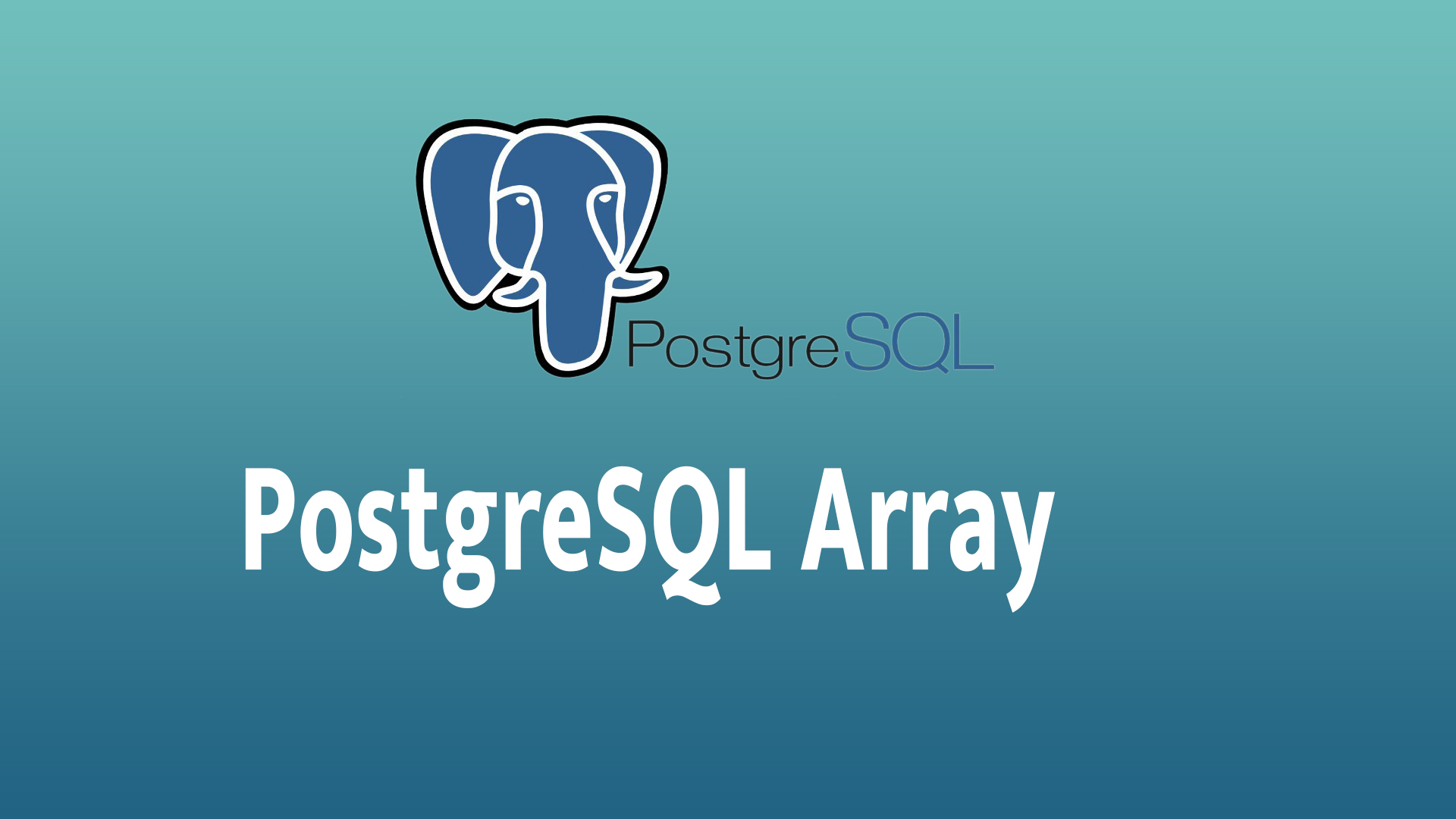PostgreSQL Arrays
PostgreSQL provides support for arrays, allowing you to store multiple values in a single column. Arrays in PostgreSQL can be used to store values of any data type, and you can work with arrays directly in SQL queries.
1. Creating Arrays in PostgreSQL
You can create arrays in PostgreSQL using the ARRAY keyword. The array can hold values of any data type such as integers, text, and even custom types.
Syntax:
ARRAY[element1, element2, ...]
Example: Create an Array of Integers
SELECT ARRAY[1, 2, 3, 4, 5] AS numbers;
Result:
| numbers |
|---|
| {1,2,3,4,5} |
2. Using Arrays in Tables
You can define an array as a column in a PostgreSQL table by specifying the data type and adding square brackets [] after the type.
Example: Create a Table with an Array Column
CREATE TABLE students (
student_id SERIAL PRIMARY KEY,
name VARCHAR(100),
grades INTEGER[]
);
- In this example, the
gradescolumn is defined as an integer array, allowing it to store multiple grade values for each student.
Inserting Data into a Table with Arrays
INSERT INTO students (name, grades)
VALUES ('Alice', ARRAY[85, 90, 92]);
- Here, Alice has an array of grades stored in the
gradescolumn.
3. Querying Arrays
You can query and manipulate arrays in several ways, including retrieving elements, updating arrays, and filtering based on array values.
Example: Select Students with a Specific Grade
To find students who have a grade of 90:
SELECT name, grades
FROM students
WHERE 90 = ANY(grades);
Result:
| name | grades |
|---|---|
| Alice | {85,90,92} |
- The
ANYoperator checks if the grade90exists in thegradesarray for any student.
4. Accessing Array Elements
You can access individual elements of an array by using the index. PostgreSQL uses 1-based indexing (i.e., the first element of the array is index 1).
Example: Access the First Element of the grades Array
SELECT name, grades[1] AS first_grade
FROM students;
Result:
| name | first_grade |
|---|---|
| Alice | 85 |
- This query retrieves the first grade in the
gradesarray for each student.
5. Modifying Arrays
You can modify arrays in PostgreSQL using array functions and operators, such as array_append, array_prepend, array_remove, and array_replace.
Example: Append a Value to an Array
To add a new grade (95) to Alice’s grades array:
UPDATE students
SET grades = array_append(grades, 95)
WHERE name = 'Alice';
Result:
| name | grades |
|---|---|
| Alice | {85,90,92,95} |
- The
array_appendfunction adds95to the end of Alice’sgradesarray.
Example: Remove a Value from an Array
To remove the grade 92 from Alice’s grades array:
UPDATE students
SET grades = array_remove(grades, 92)
WHERE name = 'Alice';
Result:
| name | grades |
|---|---|
| Alice | {85,90,95} |
- The
array_removefunction removes92from the array.
6. Array Functions
PostgreSQL includes several built-in array functions that make it easier to manipulate arrays.
Some Useful Array Functions:
array_length: Returns the number of elements in an array.SELECT name, array_length(grades, 1) AS num_grades FROM students;array_to_string: Converts an array into a string representation.SELECT name, array_to_string(grades, ', ') AS grades_str FROM students;unnest: Expands an array into a set of rows.SELECT name, unnest(grades) FROM students;
Result for unnest:
| name | unnest |
|---|---|
| Alice | 85 |
| Alice | 90 |
| Alice | 92 |
- The
unnestfunction transforms the array into individual rows.
7. Array Operators
PostgreSQL provides several operators for working with arrays.
=: Checks if two arrays are equal.SELECT name FROM students WHERE grades = ARRAY[85, 90, 92];&&: Checks if two arrays overlap (i.e., if they have common elements).SELECT name FROM students WHERE grades && ARRAY[90, 95];
Result:
| name |
|---|
| Alice |
This query finds students who have any grade in the array
{90, 95}.@>: Checks if the left array contains all the elements of the right array.SELECT name FROM students WHERE grades @> ARRAY[90];
Result:
| name |
|---|
| Alice |
- This query finds students whose
gradesarray contains90as an element.
8. Summary of Array Operations
| Operation | Description |
|---|---|
| ARRAY[] | Creates an array. |
| ANY | Checks if any element in the array matches the condition. |
| array_append() | Adds a value to the end of the array. |
| array_remove() | Removes a specific value from the array. |
| unnest() | Expands an array into a set of rows. |
| array_length() | Returns the number of elements in an array. |
| array_to_string() | Converts an array into a string. |
| @> | Checks if the left array contains all elements of the right array. |
| && | Checks if two arrays have any common elements. |


